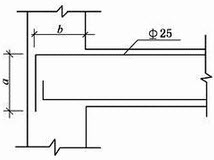Passage 4 The birth of a child is a time of hope. Its new life is a symbol of potential for growth. Its death is a denial of progress. When I was born in 1945, the child mortality rate in Korea was 152 per 1000 live births. That’s roughly the equivalent today of the death rates in Benin, or Mozambique, Swaziland, Cameroon, or Ethiopia. // Tremendous progress is possible. The mortality rate in my country has now dropped to just 5 children per 1,000. That’s one of the lowest rates in the world, lower than the rates in New Zealand, the United States, or the United Kingdom. // Our goals—part of the Millennium Development Goals—are to cut child deaths by two thirds by 2015 from 1990 rates, and maternal deaths by three quarters. Every minute 20 children under the age of five die. More than 70% of all child deaths are caused by preventable and treatable conditions, like malaria, measles, HIV or diarrhea. The greatest risk is in their first four weeks of life when babies die from conditions like low birth-weight, birth trauma, asphyxia, and severe infections like pneumonia, meningitis or tetanus. // This is Elizabeth. She lives in Ethiopia. Malaria is endemic, yet only 17% of children under five in this country sleep under mosquito nets. Elizabeth’s family can only afford one net, which she and her mother sleep under. Many of the local children have died from the disease. // Nine-month-old Lang lives in the Lao Democratic People’s Republic. Like 82% of children in her country, she sleeps under a bednet. The family has two nets, but the insecticide treatment wore them off a long time ago, and they are full of holes. Many people in their district fall ill from malaria, including Lang’s father, who is unable to work at times. // Simpler and effective protection measures, like treated bednets, make the difference. But only if every family uses one. Elizabeth and Lang’s mothers try to make their home as protected as possible for their children. It’s natural to see home as a safe place. Sadly it’s not. // Just last month WHO launched a report on domestic violence. One of the more shocking facts revealed by that report was the extent of violence against women during pregnancy. One quarter to one half of the women who reported this abuse, said that they had been deliberately kicked or punched in the abdomen. Unsurprisingly, women in violent relationships are significantly more likely to suffer miscarriages, or to undergo abortion. // The study also found that, in some settings, a significant proportion of women thought it was acceptable for a man to beat his wife under certain circumstances. Women in these violent households have more health problems than others, yet often feel unable to talk to anyone about their situation or seek help. This violence is also associated with low birth weight, and with higher infant and under-five mortality. // Every minute a woman is dying from complications in pregnancy and childbirth. Almost all of these deaths—99%—are taking place in low and middle income countries. Mothers and children from the poorest families in Sub-Saharan Africa and south Asia are the most likely to die. Malnutrition contributes ply to these deaths, increasing the risk of dying from other causes. Lack of access to food is one reason for malnourishment, but poor feeding practices and infection also contribute. // ("Make Every Mother and Child Count—Tracking Progress in Child Survival" by LEE Jong-wook, former Director-general of WHO in London, United Kingdom, 13 December 2005)

 25钢筋。试判断在该节点锚固水平段b和向下弯折段a,与下列何项数值最为接近?()框架中间层端节点
25钢筋。试判断在该节点锚固水平段b和向下弯折段a,与下列何项数值最为接近?()框架中间层端节点
